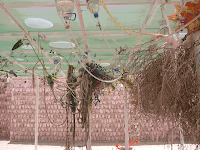Malick Sidibé Golden Lion for Lifetime Achievement at 52 Venice Biennale
Statement and recommendation by the Director of the 52nd International Art Exhibition, Robert Storr
Photography has been perhaps the most widely and inventively used artistic medium in Africa in the post- colonial era, as a spate of recent exhibitions has clearly shown. As they have also demonstrated beyond any shadow of a doubt, no African artist has done more to enhance photography’s stature in the region, contribute to its history, enrich its image archive or increase our awareness of the textures and transformations of African culture in the second half of the twentieth century and the beginning of the twenty-first than Malick Sidibé.
Operating primarily from a small studio on one of the busiest streets of central Bamako, the capital of Mali, Sidibé has been the signal portraitist of his city and nation and the intimate observer of the Malian musical scene. Like August Sander, the great German photographer, he has preserved the likenesses of countless individuals while in the process recording the face of the rapidly changing society they, as citizens, have collectively brought into being.
For the 52nd Biennale of 2007 Sidibé has joined forces with the organizers of the project “Les Africains Chantent Contre le SIDA/Africans Sing Against AIDS” to take pictures of the contestants in a countrywide competition for singers and song writers who composed and performed works in Mali’s various languages designed to provide information about the disease, its prevention and its treatment. The unique presence of each of the contestants is the fruit of a collaboration between the subject and the photographer, a collaboration subtly guided by his unfailing tact and captured by his acute eye. At 72, Malick Sidibé is the undisputed master of his photographic generation. No artists anywhere is more deserving of the 2007 Biennale of Venice’s Golden Lion for Lifetime Achievement, and none more worthy of being the first African so honored.
Malick Sidibé - Biographical data
Born in Soloba, Mali, in 1936. Lives and works in Bamako, Mali
Solo exhibitions
2001: Stedelijk Museum, Amsterdam, The Netherlands.
2000: Centre d’Art Contemporain , Geneva, Switzerland
1996: Museum of Contemporary Art, Chicago, USA
Group exhibitions
2001: You look beautiful like that: The Portrait of Photographs of Seydou Keita and Malick Sidibé, Fogg Art Museum, Harvard University Art Museums, Cambridge, MA; travelled to UCLA Hammer Museum, University of California, Los Angeles; Norton Museum of Art, West Palm Beach, Florida; National Portrait Gallery, London; Williams College Museum of Art, Williamstown, Massachussetts, MA.
Publications
Andre Magnin, Malick Sidibe, photographs, Steidl Publishing, 2006.
Michael Amy, Malick Sidibé and Emile Guebehi at Jack Shainman, in “Art in America”, June-July, 2005.
Amadou Chab-Touré, Malick Sidibé, photographe, L’Oeil, 2001.
culled from www.labiennale.org
















